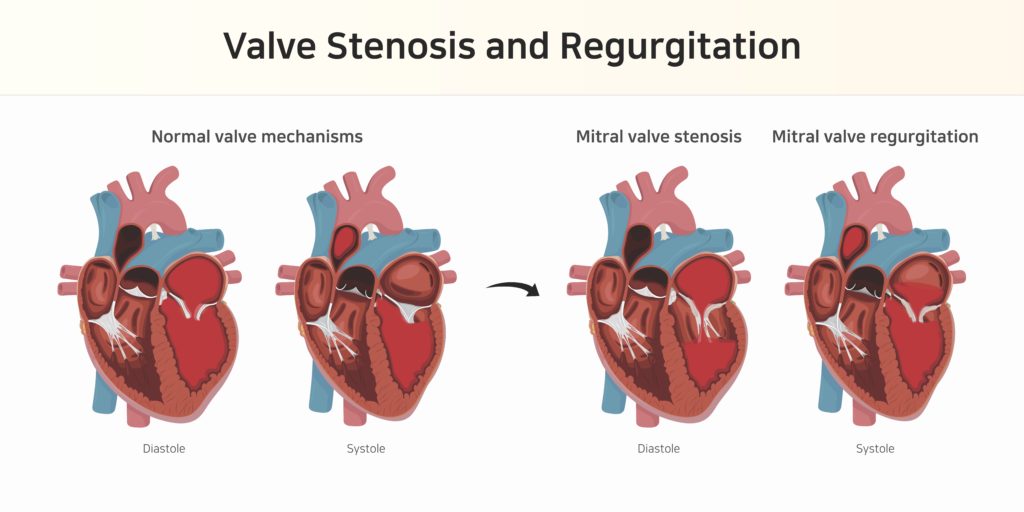Valvular Heart Disease: What are the different types
Valvular Heart Disease is a medical condition that should be treated as soon as it is diagnosed in a patient. The heart consists of 4 valves that are responsible for the consistent functioning of the organ and ensuring that all of the blood flows in through one direction and flows out the other when passing through the heart. These valves are – Mitral, Pulmonic, Tricuspid and Aortic valves.
A breakdown in the functionality of any of these valves can lead to major issues with the overall circulatory function within the body. Specific issues with the functioning of any of these valves can be responsible for specific types of valvular diseases. Here is a detailed description of each of the types of valvular heart disease causes that can affect your body without proper attention and care taken for your heart.

Stenotic Valvular Disease
This particular disorder occurs when any of the valves turn stenotic or narrow down than their regular size. This valvular stenosis makes it harder for the heart to pump blood and thus causes strain to the heart muscles. It also messes the circulatory system making it hard for certain parts of your body to receive proper blood flow.
Regurgitant Valvular Disease
When either of the valves become regurgitant or in other words, they seem to be not closing all the way through, they can start letting impure blood move in the other direction. This backward flow of blood can start making your heart work in overdrive to pump the purified blood towards the other parts of the body. When your organs start receiving insufficient blood flow, valvular heart disease symptoms can start cropping up.
Bicuspid Valvular Disease of the Aorta
This disease specifically occurs when the aortic valve develops two cusps or leaflets instead of the required three. The absence of the third cusp can either cause the valve to become stenotic or regurgitant.
Acquired Valvular Disease
This usually occurs when a normally functioning heart suddenly develops a valvular defect. You can find many different factors leading up to such a situation. Primarily, infections such as endocarditis or even the onset of rheumatic fever have shown to trigger this kind of valvular disease. The inflammation of the cusps, sticking together of the cusps to become rigid or even scarring of the leaflets can be seen during the occurrence of acquired valvular disease. Bacterial endocarditis can even introduce germs that are known to cause foreign growths on the valve itself. This causes scar tissue or even holes to develop that may easily cause the valves to start leaking or becoming narrowed.
During Valvular Heart Disease treatment doctors have also found many other reasons for acquired valvular diseases. This includes but not limited to heart attacks, coronary arterial diseases, and cardiomyopathy which is a direct disease of the heart muscle (weakening or scarring of the heart muscle tissue).
